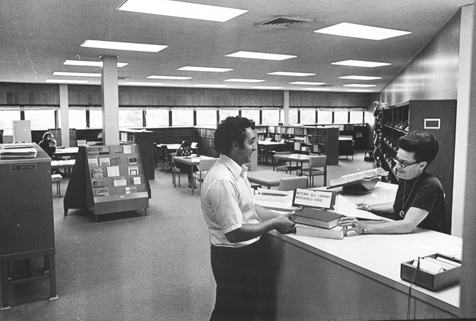
Faculty Research 1970 - 1979
Anti-viral activity induced by culturing lymphocytes with tumor-derived or virus-transformed cells. Identification of the anti-viral activity as interferon and characterization of the human effector lymphocyte subpopulation.
Document Type
Article
Publication Date
1978
Keywords
Cell-Division, Cell-Line, Cell-Membrane: im, Cell-Transformation-Viral, Human, Immunoglobulins-Fc, Interferons, Lymphocytes: im, Mice, Neoplasms: pa, SUPPORT-U-S-GOVT-P-H-S, Virus-Replication
First Page
1299
Last Page
1313
JAX Source
J Exp Med 1978 May 1;147(5):1299-1313
Abstract
A viral inhibitor(s) is released in the supernate of mixed cultures containing human or mouse lymphocytes and cells from certain lines. The inhibitor is active against a variety of unrelated viruses and is a protein that is not toxic for cells. It does not inactivate viruses directly, but inhibits viral replication through an intracellular mechanism that involves synthesis by the cells of both RNA and protein. These characteristics identify the inhibitor as an interferon. The anti-viral activity is contained in at least two molecular species, of approximately 25,000 and 45,000 daltons, respectively. In addition to the anti-viral activity, the supernates of the mixed cultures display an anti-cellular activity, the inhibition of DNA synthesis and of cell multiplication. The anti-viral and the anti-cellular activities are positively correlated in supernates from various cultures and in partially purified preparations. The human cell population responsible for interferon production is composed mainly of Fc-receptor positive, surface immunoglobulin negative, non-T-cell lymphocytes. The ability of certain cell lines to induce interferon seems to be preferentially associated with tumor origin or with in vitro transformation by certain viruses (Epstein-Barr virus, murine sarcoma virus).
Recommended Citation
Trinchieri G,
Santoli D,
Dee RR,
Knowles BB.
Anti-viral activity induced by culturing lymphocytes with tumor-derived or virus-transformed cells. Identification of the anti-viral activity as interferon and characterization of the human effector lymphocyte
subpopulation. J Exp Med 1978 May 1;147(5):1299-1313

